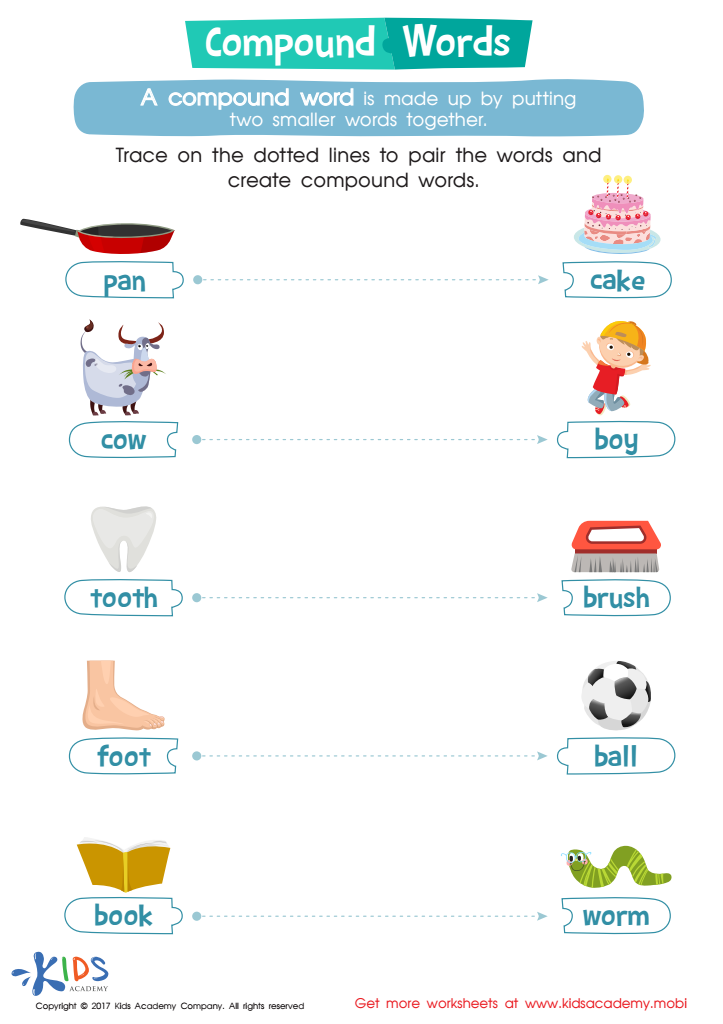Understanding compound words Worksheets for Ages 7-9
3 filtered results
-
From - To
Explore our engaging "Understanding Compound Words Worksheets" designed for children ages 7-9! These fun, interactive resources help young learners grasp the concept of compound words by combining two familiar words to create new meanings. With a variety of activities, including matching, word searches, and creative writing prompts, kids will enhance their vocabulary while developing essential reading skills. Perfect for classroom or home use, our worksheets cater to different learning styles, promoting both creativity and comprehension. Help your child unlock the exciting world of compound words and watch their confidence soar as they master this vital language skill! Check out the worksheets today!


Compound Words Word Structure Worksheet


Let's Practice Compound Words Word Structure Worksheet


Compound Words Worksheet
Understanding compound words is essential for children aged 7-9, and parents and teachers should prioritize this skill for several reasons. First, compound words enhance vocabulary development. By learning to combine simpler words, children can expand their language skills, facilitating better communication and comprehension. For example, understanding how "sun" and "flower" combine to form "sunflower" helps children make connections between words, enriching their language experience.
Moreover, mastering compound words promotes reading fluency. As children encounter these words in texts, they learn to decode them more easily, increasing their confidence and motivation in reading. This fluency is crucial as it sets the foundation for more complex literacy skills in later grades.
Additionally, engaging with compound words stimulates critical thinking and creativity. Children can play with word combinations, fostering their imagination and problem-solving skills, which are valuable beyond language arts.
Ultimately, focusing on compound words encourages collaboration between parents and teachers. By exploring word combinations in daily activities and reading, children gain an appreciation for language's structure and playfulness. This understanding lays a solid groundwork for future learning, empowering children as confident communicators and fostering a lifelong love for reading.
 Assign to My Students
Assign to My Students





.jpg)














